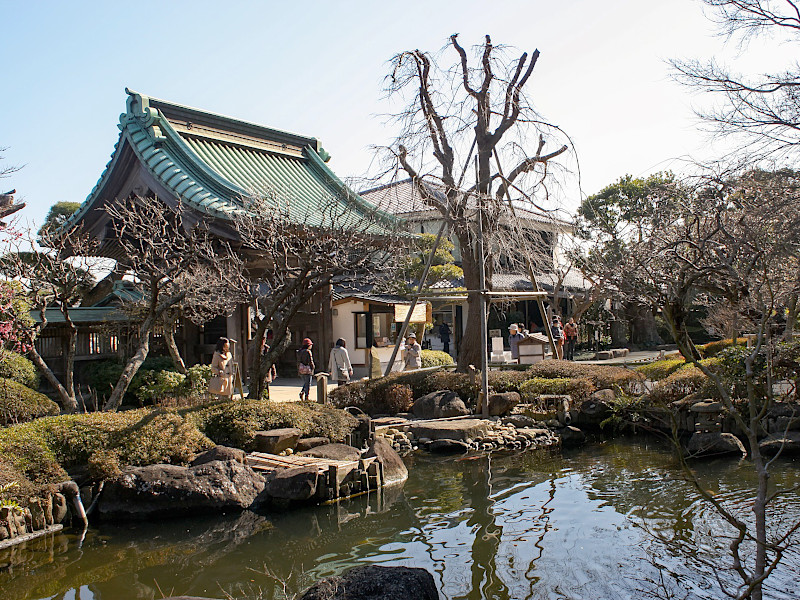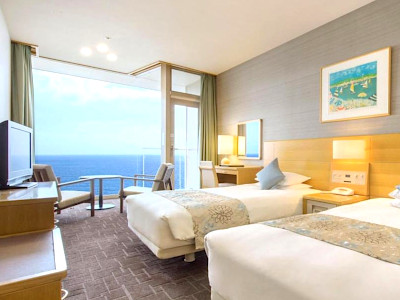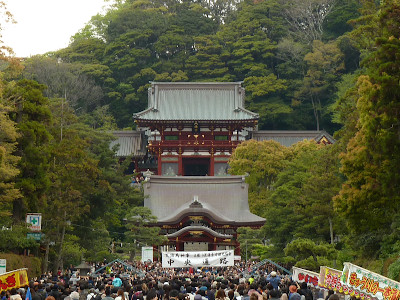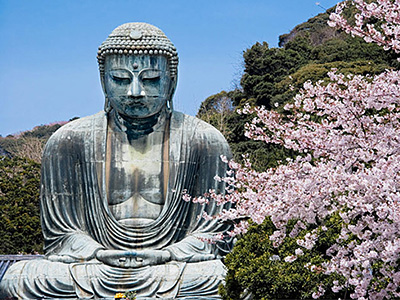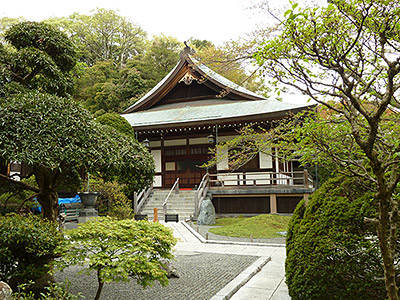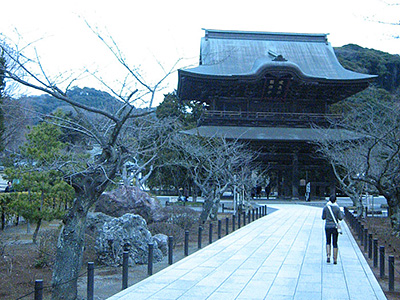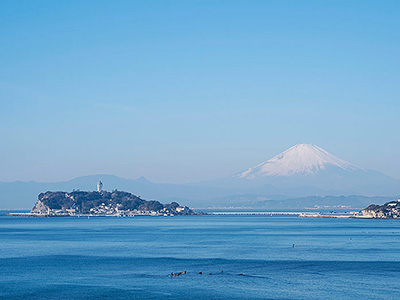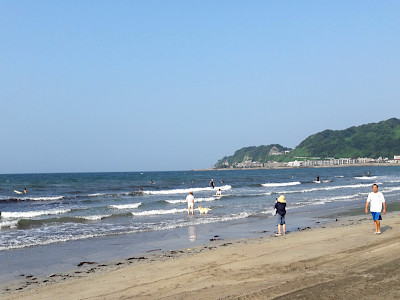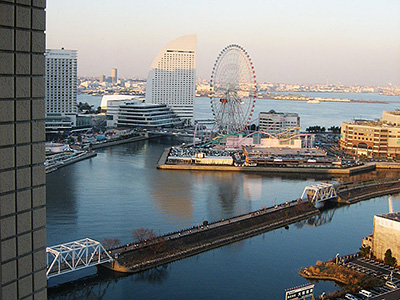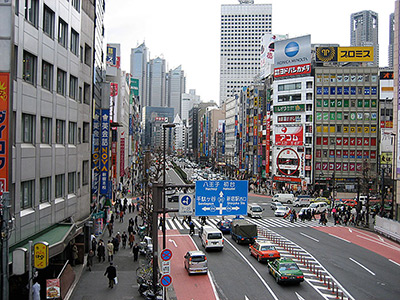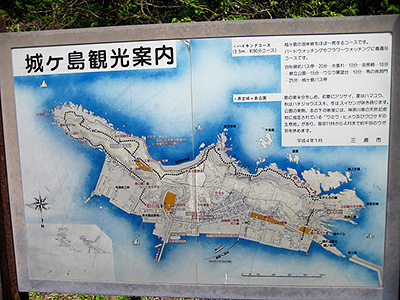Hasedera Temple in Kamakura
This post can contain affiliate links, which means that we may receive a small commission if you make a purchase using these links.
Facts & Figures
Hasedera or Hase-kannon in Kamakura is a Buddhist temple of the Jodo sect founded by priest Honen (1133 – 1212). Originally Hasedera belonged to the Tendai sect. The temple is well-known for displaying an eleven-headed wooden statue of Kannon (Goddess of Mercy) inside the Main Hall. The gold leaf-covered statue has a height of over 9 meters. Right behind the entrance, you will see the beautiful Hasedera garden, Hojo-ike pond, Benten-do Hall, and Benten-kutsu Cave. In total, there are seven main buildings. The temple is a part of the thirty-three Kannon pilgrimage in the Kanto area and is station number 4 along the route.
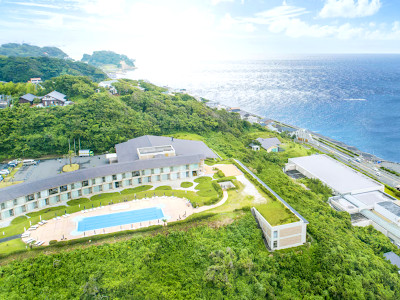 Best Places to Stay in Kamakura >
Hase-kannon is located halfway up Mt. Kamakura and offers great views over the coastal town and Sagami Bay with the Yuigahama Beach. When you walk up the mountain you will see hundreds of small Jizo statues. They represent the guardian deity of children. My tip: If you love to see full blooming hydrangeas then the months of June and July are the best time to visit this temple complex.
Best Places to Stay in Kamakura >
Hase-kannon is located halfway up Mt. Kamakura and offers great views over the coastal town and Sagami Bay with the Yuigahama Beach. When you walk up the mountain you will see hundreds of small Jizo statues. They represent the guardian deity of children. My tip: If you love to see full blooming hydrangeas then the months of June and July are the best time to visit this temple complex.
- Hasedera Temple:
- Opening Hours - 8:00 am to 5:30 pm (final entry 30min before closing, April - June)
- Opening Hours - 8:00 am to 5:00 pm (final entry 30min before closing, July - March)
- Closed - never, open year-round
- Admission fee - 400 yen (Adults), 200 yen (Children age: 6-11)
- Kannon Museum:
- Opening Hours - 9:00 am to 4:30 pm (final entry 30min before closing)
- Closed - on Tuesdays and sometimes due to exhibition replacement
- Admission fee - 300 yen (Adults), 150 yen (Children age: 6-11)
My tips for local activities
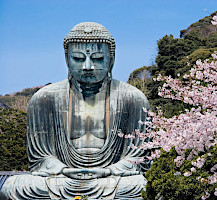
How about exploring the beautiful city of Kamakura and its historical places with a local guide? The personalized tour by our partner GetYourGuide can take between 4 - 6 hours. For more details check out this page >
History
It is believed that Hasedera was founded in 736 during the Nara period (710 - 794). Hasedera is one of the oldest temples in Kamakura. The legend says that in 721 monk Tokudo Shonin (656 - 735) discovered a large camphor tree in a forest in Nara. He decided to create 2 statues of the eleven-faced Kannon from it. One part (the smaller version) was used for the Hasedera Temple in Nara Prefecture and the larger version thrown into the sea and arrived at Miura Peninsula near Kamakura in 736. From there the Hasedera temple was founded with that sacred image on display.
Location

Hasedera Temple is located near the Great Buddha Statue (Kotoku-in Temple) in the seaside town Kamakura in the Kanagawa Prefecture. Kamakura is less than 1 hour away by train from Tokyo.
Address: 11-2, Hase 3-chome, Kamakura, Kanagawa 248-0016
How to get to Hasedera Temple?
- 5min walk from Hase Station served by the Enoshima Electric Railway
Sightseeing spots at the Hasedera Temple
Top:
Kannon (Goddess of Mercy) - The gold leaf-covered wooden statue with a height of 9.18 meters is a must-see during your Kamakura stay. Its eleven faces represent the different stages in the search for enlightenment. The statue can be found in the Main Hall (Kannon-do).
Benten-kutsu Cave - Here you will find carved statues of sacred Buddhist figures within a long tunnel.
Shoro Belfry (Temple Bell) - The original bell was one of the oldest in the Kanto region and dates back to 1264. It is since 1953 an Important Cultural Property of Japan. A new bell was cast in 1984. Be here at 8:00 am in the morning and you can hear the sound.
Kannon Museum - The museum opened its doors to the public in 1980. On display are ancient treasures of the temple like the Kannon Bosatsu (Kannon Bodhisattva). It is the principal image of the Hasedera Temple in Kamakura.
Amida-do Hall - The highlight of this place is the golden statue of Amida Buddha with a height of approx. 3 meters and the largest (width 1.05m) mokugyo in Japan. It is a traditional percussion instrument used in East Asian Buddhist ceremonies and practices.
Jizo-do Hall - The hall is surrounded by hundreds of Jizo statues (Sentai Jizo). Jizo represents a Buddhist deity, which takes care of the well-being of children.
Observation point - Right beside the Main Hall (Kannon-do) you can enjoy amazing views from the Kaikoan restaurant over the Sagami Bay and Kamakura.
Benten-do Hall - The hall is dedicated to Benzaiten, the goddess of music and wisdom.
Festival & Events in Kamakura (dates can change without notice)
April
Kamakura Matsuri (from 2nd to 3rd Sunday)
The city and its history will be celebrated.
August
Bonbori Matsuri (7th to 9th)
Hundreds of lanterns can be found around the Tsurugaoka Hachiman-gu shrine.
Kamakura Hase no Akari (19th to 25th)
Eight temples and shrines (incl. Kotoku-in) will be illuminated at night.
September
Reitai Matsuri (between 14th and 16th)
Great festival with its most famous attraction the Japanese horseback archery.
December
Joya-e (New Year’s Eve), Manto Kigan (Candle ceremony) (31st)
On that day visitors are allowed to enter the Hasedera Temple at 11:00 pm. More than 6000 Manto candles are lit to welcome the new year. Enjoy the beautiful atmosphere.

